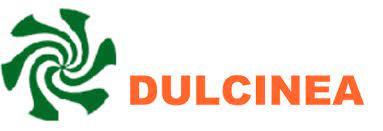Images of a Dana
Coverage on Spanish Television Analysis of the Programming for October 29, 2024
DOI:
https://doi.org/10.62161/revvisual.v17.5879Keywords:
Emergency journalism, Images, Social media, Television coverage, Citizen journalism, TV schedule, DANAAbstract
This study examines the television coverage of the DANA on October 29, 2024, in Spain, focusing on the extent and quality of news reporting and the use of images. The DANA, an extreme meteorological phenomenon, severely impacted the Valencian Community, causing over 200 deaths and extensive economic losses. While morning programs alerted viewers to the impending risk, prime-time coverage was limited, except for Código 10 on Cuatro. Most broadcast images came from eyewitnesses rather than reporters. The study concludes with recommendations on image verification, ethical standards, and programming adjustments for improved emergency coverage.
Downloads
Global Statistics ℹ️
|
278
Views
|
88
Downloads
|
|
366
Total
|
|
References
Ahva, L., & Hellman, M. (2015). Citizen eyewitness images and audience engagement in crisis coverage. International Communication Gazette, 77(7), 668-681. DOI: https://doi.org/10.1177/1748048515601559
Antoniou, N., & Ciaramicoli, M. (23-27 de septiembre de 2013). Social media in the disaster cycle–useful tools or mass distraction? International Astronautical Congress, IAC-13.E5.5.3. Beijing, China.
Barlovento (2024, 30 octubre). Audiencias TV. Barlovento Comunicación. https://barloventocomunicacion.es/audiencias-diarias/audiencias-29-de-octubre-de-2024/
Buoncompagni, G. (2024). Media and Natural Disasters: Organising Storytelling in the Age of Climate Change. Journalism and Media, 5(2), 614-625. DOI: https://doi.org/10.3390/journalmedia5020041
Cobianchi, V. (2024). The coverage of the COVID-19 emergency outbreak in the Italian TV news. Comunicazioni Sociali, 1, 58-75.
Cooper, G. (2017). UGC creators and use of their content by mainstream media. In Tong, J. & Lo, S-H. (Eds.), Digital Technology and Journalism (pp. 71-90). Cham: Palgrave Macmillan. doi: 10.1007/978-3-319-55026-8_4 DOI: https://doi.org/10.1007/978-3-319-55026-8_4
Efeagro (2024, 30 octubre). Las inundaciones de Valencia, las peores del siglo y entre las más graves en 75 años. EFE:Agro. https://efeagro.com/inundacion-peores-siglo-entre-mas-graves/
Ewart, J., & McLean, H. (2019). Best practice approaches for reporting disasters. Journalism, 20(12), 1573-1592. DOI: https://doi.org/10.1177/1464884918757130
Goode, L. (2009). Social news, citizen journalism and democracy. New Media & Society, 11(8), 1287-1305. https://doi.org/10.1177/1461444809341393 DOI: https://doi.org/10.1177/1461444809341393
Joye, S. (2018). When societies crash: A critical analysis of news media’s social role in the aftermath of national disasters. Journal of Applied Journalism & Media Studies, 7(2), 311-327. DOI: https://doi.org/10.1386/ajms.7.2.311_1
Lai, S. (2011). Iconic images and citizen journalism. In Proceedings of the 2011 iConference (pp. 702-703). Association for Computing Machinery. https://doi.org/10.1145/1940761.1940876 DOI: https://doi.org/10.1145/1940761.1940876
Llasat, M. C., Martín, F., & Barrera, A. (2007). From the concept of “Kaltlufttropfen”(cold air pool) to the cut-off low. The case of September 1971 in Spain as an example of their role in heavy rainfalls. Meteorology and Atmospheric physics, 96, 43-60. DOI: https://doi.org/10.1007/s00703-006-0220-9
Long, Z., Mccreadie, R., & Imran, M. (2024). Crisisvit: A robust vision transformer for crisis image classification. arXiv preprint arXiv:2401.02838.
Lozano Ascencio, C., Amaral, M. F., & Puertas Cristóbal, E. (2020). Los relatos periodísticos de riesgos y catástrofes en las televisiones de España. Revista mexicana de investigación educativa, 25(87), 1183-1209.
Luque-Ortiz, S., & Sánchez-Ramiro, J. M. (2022). La cobertura y el tratamiento informativo en las cadenas de televisión durante los atentados salafistas yihadistas de Barcelona y Cambrils de 2017. Un caso de estudio: Antena 3 y Telecinco. Revista Mediterránea de Comunicación 13, (2),135-153. DOI: 10.14198/MEDCOM.21733 DOI: https://doi.org/10.14198/MEDCOM.21733
Maldito Clima (2024, 8 noviembre). Cronología de la crecida del río Magro, la rambla del poyo y los avisos de la AEMET, de la CHJ y la alerta de la Comunidad Valenciana. https://maldita.es/clima/20241108/cronologia-avisos-rio-magro-rambla-poyo/#:~:text=Se%20desborda%20el%20r%C3%ADo%20Magro,13%3A29%20horas.
Mayo-Cubero, M. (2020). News sections, journalists and information sources in the journalistic coverage of crises and emergencies in Spain. Profesional de la información, 29(2). DOI: https://doi.org/10.3145/epi.2020.mar.11
Miller, A., & Goidel, R. (2009). News organizations and information gathering during a natural disaster: Lessons from Hurricane Katrina. Journal of Contingencies and Crisis Management, 17(4), 266-273. DOI: https://doi.org/10.1111/j.1468-5973.2009.00586.x
Nese, J. M., Najjar, R. G., & Murgo, J. G. (2012). Climate science and the broadcast meteorologist. Bulletin of the American Meteorological Society, 93(12), 1913-1916. DOI: https://doi.org/10.1175/BAMS-D-12-00025.1
Niekamp, R. (2010). Sharing Ike: Citizen media cover a breaking story. Electronic news, 4(2), 83-96. DOI: https://doi.org/10.1177/1931243110365470
Pérez Curiel, C., Gutiérrez Rubio, D., Sánchez González, T., & Zurbano-Berenguer, B. (2015). El uso de fuentes periodísticas en las secciones de Política, Economía y Cultura en el Periodismo de Proximidad Español. Estudios sobre el Mensaje Periodístico, 21 (Especial Noviembre), 101-117. DOI: https://doi.org/10.5209/rev_ESMP.2015.v21.50661
Perkins IV, D. R., Myers, T., Francis, Z., Mazzone, R., & Maibach, E. (2018). Attributes of weathercasters who engage in climate change education outreach. Weather, Climate, and Society, 10(3), 487-500. DOI: https://doi.org/10.1175/WCAS-D-17-0025.1
Sancho-Ligorred, B. & Rodríguez, P. (2022). Atentados de Las Ramblas y Cambrils (2017): análisis de la cobertura televisiva pública de TVE, TV3 y Betevé y propuestas de mejora. Estudios sobre el Mensaje Periodístico, 28(2), 405-416. https://doi.org/10.5209/esmp.75980 DOI: https://doi.org/10.5209/esmp.75980
Souza, M. D., & Martínez, V. (2011). La intervención de la televisión en el terremoto chileno. Comunicar, 36, 69.
Wall, M. (2016). Citizen journalism: connections, contradictions, and conflicts. En The Routledge companion to digital journalism studies (pp. 235-243). Routledge. DOI: https://doi.org/10.4324/9781315713793-24
Webster, J. G., & Ksiazek, T. B. (2012). The dynamics of audience fragmentation: Public attention in an age of digital media. Journal of communication, 62(1), 39-56. DOI: https://doi.org/10.1111/j.1460-2466.2011.01616.x
Wigley, S., & Fontenot, M. (2010). Crisis managers losing control of the message: A pilot study of the Virginia Tech shooting. Public Relations Review, 36(2), 187-189. DOI: https://doi.org/10.1016/j.pubrev.2010.01.003
Downloads
Published
How to Cite
Issue
Section
License
Copyright (c) 2025 Authors retain copyright and transfer to the journal the right of first publication and publishing rights

This work is licensed under a Creative Commons Attribution-NoDerivatives 4.0 International License.
Those authors who publish in this journal accept the following terms:
-
Authors retain copyright.
-
Authors transfer to the journal the right of first publication. The journal also owns the publishing rights.
-
All published contents are governed by an Attribution-NoDerivatives 4.0 International License.
Access the informative version and legal text of the license. By virtue of this, third parties are allowed to use what is published as long as they mention the authorship of the work and the first publication in this journal. If you transform the material, you may not distribute the modified work. -
Authors may make other independent and additional contractual arrangements for non-exclusive distribution of the version of the article published in this journal (e.g., inclusion in an institutional repository or publication in a book) as long as they clearly indicate that the work was first published in this journal.
- Authors are allowed and recommended to publish their work on the Internet (for example on institutional and personal websites), following the publication of, and referencing the journal, as this could lead to constructive exchanges and a more extensive and quick circulation of published works (see The Effect of Open Access).













